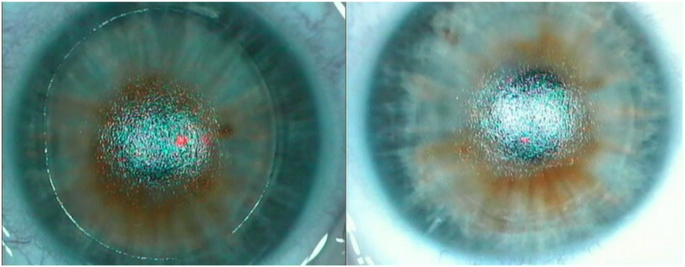
If you are considering laser eye surgery, you have probably heard of PRK and LASIK. PRK (photorefractive keratectomy) and LASIK (laser-assisted in situ keratomileuses) are the two most common types of laser eye surgery. In this blog post, we will discuss the differences between PRK and LASIK, as well as the benefits and risks of each procedure. We will also talk about the pros and cons of trans-PRK, which is a new type of laser eye surgery that is becoming increasingly popular.
Contents
Trans-PRK is a type of refractive surgery that is used to correct vision problems. It is a minimally invasive procedure that uses a laser to reshape the cornea. Trans-PRK is an alternative to traditional PRK surgery and has a shorter recovery time.
Trans-PRK was developed in the early 1990s and has been approved by the FDA for use in the United States since 1996. The procedure is performed on an outpatient basis and takes about 30 minutes to complete.
Trans-PRK is also known as photorefractive keratectomy (PRK) or laser-assisted subepithelial keratectomy (LASEK).
Trans-PRK works by using a laser to remove a thin layer of tissue from the surface of the eye. This helps to reshape the cornea and correct vision problems. The procedure is performed on an outpatient basis and takes about 30 minutes to complete.
After the procedure, you will need to wear a protective shield over your eye for a few days. You may also need to use eyedrops and take oral medication to help reduce inflammation and pain. Recovery time is typically shorter with trans-PRK than with traditional PRK surgery.
Trans-PRK is an emerging refractive surgery technique that has shown to be just as effective as traditional PRK, but with a quicker healing time. In traditional PRK, the surgeon uses a blade to create a flap on the cornea. With trans-PRK, no flap is created; instead, the surface layer of the cornea (epithelium) is simply removed before the laser treatment begins.
Trans-PRK may be a good option for patients who are not candidates for LASIK due to thin corneas or other factors. It may also be a good choice for those who participate in contact sports or other activities where there is a risk of injury to the eye area.
Trans-PRK recovery is typically quicker than traditional PRK, with most people achieving 20/20 vision within a week.
If you’re considering trans-PRK or any other type of refractive surgery, be sure to consult with an experienced eye surgeon to learn more about your options and which procedure may be best for you.
There are a few key things to keep in mind before undergoing trans-PRK:
– First, the epithelium (surface layer of the cornea) must be completely removed before treatment can begin. This can cause some discomfort during the procedure, but generally only lasts a few minutes.
– Second, because there is no protective flap created during trans-PRK, patients may experience more post-operative discomfort than with traditional PRK. However, this is typically only temporary and can be managed with over-the-counter pain medication.
– Finally, it is important to follow all post-operative instructions carefully to ensure a successful outcome. This includes using eye drops as prescribed and avoiding activities that could put undue strain on the eyes (such as rubbing them or participating in contact sports) for at least the first week after surgery.
If you’re considering trans-PRK or any other type of refractive surgery, be sure to consult with an experienced eye surgeon to learn more about your options and which procedure may be best for you. And keep these tips in mind to ensure a successful outcome.
There are many benefits of Trans-PRK. Some of these are:
-It is a very precise and safe procedure
-The recovery time is shorter than with other procedures
-There is no need for stitches
-There is no risk of corneal infection
-It can be performed on patients with thin corneas
-It can correct a wide range of refractive errors.
If you are considering PRK surgery, Trans-PRK may be the best option for you. Be sure to consult with your eye doctor to see if you are a good candidate for the procedure. Recovery times vary from person to person but are typically shorter than with other types of PRK surgery.
There are many risks of Trans-PRK, which is why it’s so important to consult with a doctor before undergoing the procedure. Some of the risks include:
– Infection
– Scarring
– Allergic reaction
– Dry eyes
– Flap complications
It’s also important to note that Trans-PRK is not for everyone. If you have certain medical conditions, such as diabetes, it’s not recommended. Be sure to talk to your doctor about whether or not it is right for you.
Trans-PRK is a safe, effective, and minimally-invasive alternative to LASIK for patients with thin corneas. It is an ideal option for those who are not candidates for LASIK due to their corneal thickness or other factors. It may also be a good choice for patients who have large pupils, dry eyes, or who are active in sports or other activities that could put them at risk for eye injury.
If you are considering refractive surgery, talk to your doctor about whether trans-PRK might be right for you.
Here at Eye Mantra, we have an incredibly skilled team of health care professionals who will be happy to help you out. For any assistance regarding eyes and other related issues, you can reach out to us.
Book an appointment with us immediately by calling +91-9711115191. However, you can even mail us at eyemantra1@gmail.com or visit our site- EyeMantra.